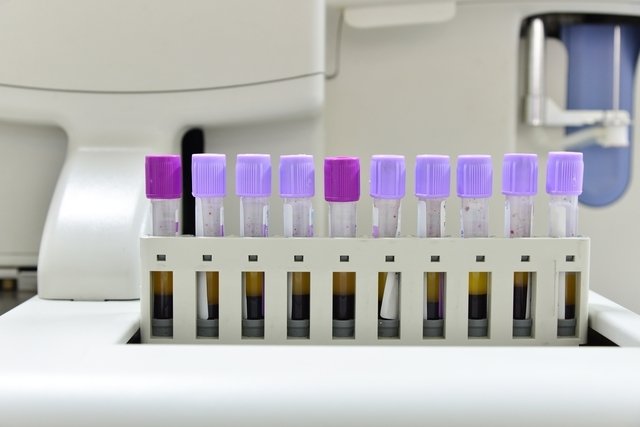Reticulocytes are young red blood cells, that is, they have not matured and are unable to transport oxygen throughout the body. Reticulocytes are produced in the bone marrow and then released into the bloodstream, becoming mature after 1 to 2 days.
Therefore, the reticulocyte count can be recommended by the doctor when he wants to investigate the functioning of the bone marrow and evaluate the possibility of diseases, such as hemolytic anemia, infections that affect the bone marrow, iron deficiency anemia or fetal erythroblastosis, for example. .
Normally, the reticulocyte test is indicated together with other laboratory tests, such as blood count and coagulogram, for example.

When reticulocyte count is indicated
The reticulocyte count may be indicated by the doctor in the following situations:
- Investigate hemolytic anemia;
- Assess the possibility of anemia due to iron or folic acid deficiency;
- Monitor anemia treatment;
- Assess bone marrow function;
- Evaluate response to chemotherapy treatment;
- After bone marrow transplantation.
The reticulocyte test is normally requested together with the blood count, as this makes it possible to better assess the production of blood cells and, therefore, check if there are any changes.
In cases where there is a large number of circulating reticulocytes and a change in the amount of red blood cells and hemoglobin, for example, it may be a sign of a change in the functioning of the bone marrow, and the doctor may recommend performing a myelogram, which is an exam that helps evaluating the bone marrow. Understand how the myelogram is performed.
Do you have questions about your exam results?
The reticulocyte test does not require preparation and is carried out by collecting a small sample of blood, which is sent to the laboratory for analysis and reticulocyte testing.
Reference value
The reticulocyte count is a percentage in relation to the total number of circulating red blood cells, and is considered normal when the reticulocyte count corresponds to 0.5 to 1.5% of the number of red blood cells. Therefore, the reticulocyte value can be variable and, therefore, it is important that the exam is evaluated by the doctor taking into account the laboratory reference values indicated in the exam.
What can be high reticulocytes
The increase in the number of reticulocytes may be due to:
- Hemolytic anemia;
- Hemorrhages;
- Hemolytic disease of the newborn, also called erythroblastosis fetalis;
- Pregnancy.
If an increase in reticulocytes is found, the doctor should recommend carrying out other tests to investigate the cause and conclude the diagnosis, such as the Coombs test, LDH measurement, coagulogram and measurement of bilirubin and fractions, for example.
What can be low reticulocytes
The main causes of low reticulocytes are:
- Anemia due to iron or folic acid deficiency;
- Aplastic anemia;
- Change in the bone marrow due to infection or tumor;
- Hepatical cirrhosis;
- Kidney disease.
In case of low reticulocytes, other tests may be indicated, such as blood count, coagulogram, tests that evaluate the liver and kidneys, as well as an exam to evaluate the bone marrow.
Bibliography
- SCIENCE DIRECT. Reticulocyte Count. Disponível em: <https://www.sciencedirect.com/topics/biochemistry-genetics-and-molecular-biology/reticulocyte-count>. Acesso em 25 ago 2023
- RAI, DIPTI; WILSON, ALLECIA M.; MOOSAVI, LEILA. Histology, Reticulocytes. 2023. Available at: <https://www.ncbi.nlm.nih.gov/books/NBK542172/>. Accessed on Aug 25, 2023

Sign up for our newsletter and stay up to date with exclusive news
that can transform your routine!
Warning: Undefined array key "title" in /home/storelat/public_html/wp-content/plugins/link-whisper-premium/templates/frontend/related-posts.php on line 12
Warning: Undefined array key "title_tag" in /home/storelat/public_html/wp-content/plugins/link-whisper-premium/templates/frontend/related-posts.php on line 13



